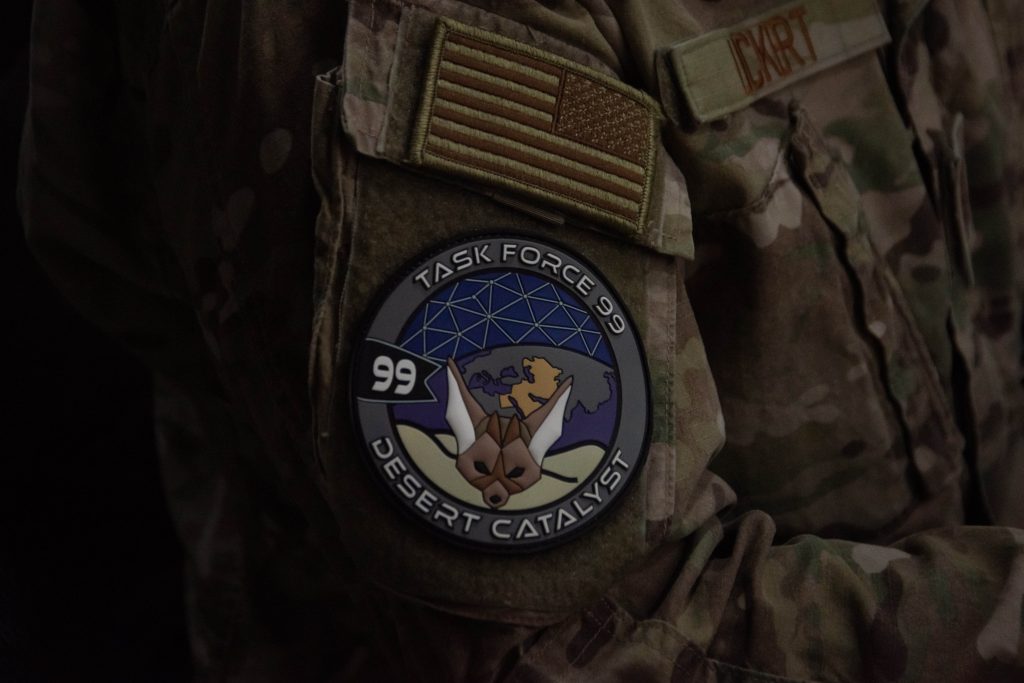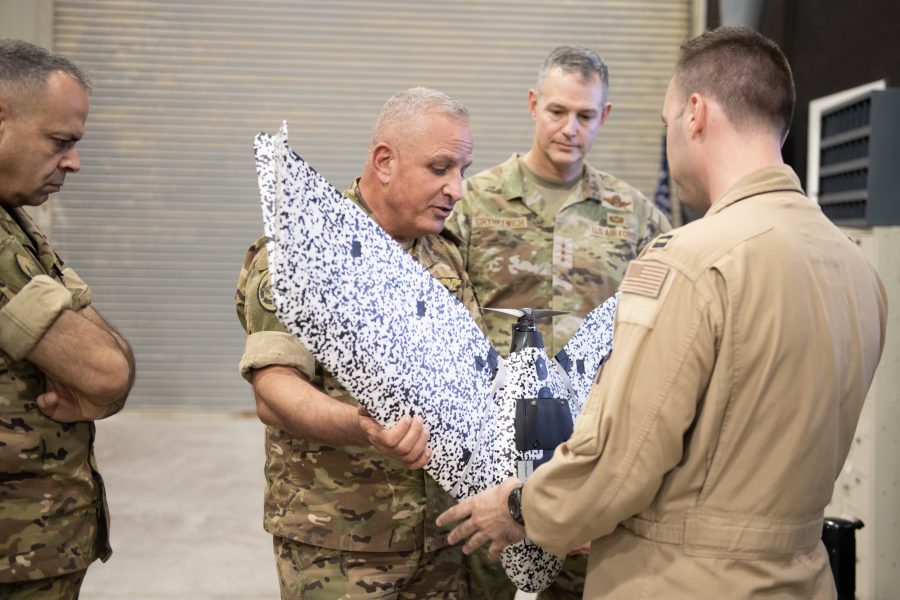An Air Force task force charged with advancing new technologies is considering fielding one-way attack drones in the Middle East, the top USAF commander for the region told reporters Oct. 4.
Task Force 99, a small detachment in Air Forces Central (AFCENT), is exploring kinetic and electronic warfare options for unmanned aerial systems, AFCENT commander Lt. Gen. Alexus G. Grynkewich said at a Defense Writers Group event.
AFCENT’s future drones “could include being used for one-way kinetic attack—the kamikaze drones that have been used against us,” Grynkewich said. “That is certainly something that we’re looking at.”
U.S. personnel in the Middle East have been targeted by drone attacks launched by Iranian-backed militias. In March, a drone that the U.S. said came from an Iranian-backed militia killed a U.S. contractor and injured numerous U.S. military and civilian personnel in eastern Syria.
Iranian-supplied one-way attack drones have also been used extensively by Russian forces in their invasion of Ukraine.
Task Force 99 was established a year ago to develop unmanned and digital technologies and explore their application in an operational environment. It is comprised of a small team of about 15 Airmen that operates out of Al Udeid Air Base, Qatar, and is largely unfettered by traditional service bureaucracy.
“They just happen to be the right people with the right skills that we discovered—knew how to code or knew how to 3D-print,” Grynkewich said.
The task force’s current fleet is made up of 98 drones either in its inventory or on order, with ranges that vary from fewer than 15 miles to 900 miles.
Some of its drones have already been used for operational intelligence, surveillance, and reconnaissance missions. Unlike MQ-9s, the Task Force 99 drones can fly below cloud cover to gather information with high fidelity.
“They’ve proven capable,” Grynkewich said of the systems. “Using smaller, more bespoke capabilities that fly lower and under the weather, we’ve been able to use high-resolution cameras and get information on things that might be a threat to us. So that’s one use case that we’ve really started to flesh out.”
Grynkewich declined to definitively say Task Force 99 will field one-way attack or electronic warfare drones. But he said such capabilities might be useful.
“I call it imposing dilemmas on the adversary,” Grynkewich said. “In a way these are just low, slow cruise missiles with different payloads. So we’re looking at that as options. But it also could include something that can do spectrum warfare, something that just harasses the adversary, etc.”

Grynkewich said that the Pentagon’s Replicator Initiative, which was recently announced by Deputy Secretary of Defense Kathleen Hicks, could provide an important boost for the task force. That effort aims to field thousands of new drones in the next 18-24 months, which could help Task Force 99 field drones at a greater scale.
Task Force 99 “does a really good job of surveying the innovative space for technologies, bringing them into a realistic combat environment, austere environment, a hot environment, a humid environment, and testing them,” Grynkewich said. “We can come up with concepts of operation to use them. But getting them from that next step where we need to scale is a little bit difficult.”
“I think what Replicator will do is help us make that shift,” he added.
While Grynkewich did not name commercial drones Task Force 99 has used, he did give an example of “adaptability” when asked how AFCENT might create an attack drone. Task Force 99 has 3D-printed a system it calls “Kestrel” for around $2,500 per drone with a range of about 100 kilometers.
Kestrel is “something that can be relevant on the battlefield,” he said. “$2,500, that includes all the avionics. What it doesn’t include is a payload. It can carry about a three-kilogram payload, plus or minus. That payload could be any number of things that you put in it.”
